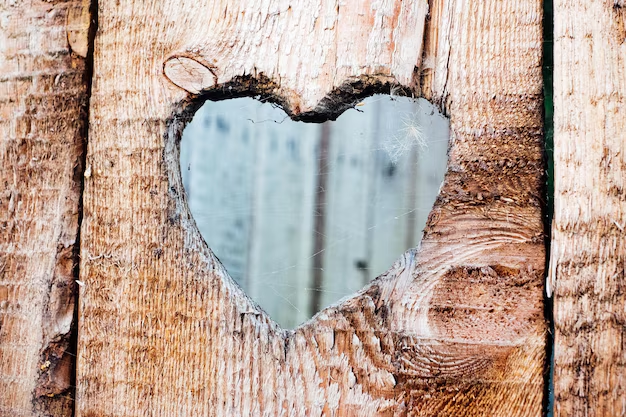Transform Your Photos into Art: Step-by-Step Guide to Transferring Images onto Wood
Imagine walking into your home and being greeted by stunning, personalized pieces of decor featuring your favorite photos. Transforming personal snapshots into beautiful wood art can give your space unique character and charm. Whether it’s a sentimental family picture or a breathtaking travel photo, transferring images onto wood allows you to preserve cherished memories in a novel way.
Why Transfer Photos to Wood?
Before diving into the process, let’s consider why you might choose this medium. Wood adds a rustic, timeless element to any photograph, elevating it from a simple picture to a piece of art. It's a perfect blend of tradition and modern creativity, offering a tactile, visually engaging experience. Plus, it's an excellent DIY project that can be done with just a few materials at home.
Choosing the Right Image and Wood
Selecting the Perfect Photo
- Resolution Matters: Choose high-resolution images for the best results. Blurry or pixelated photos might not transfer well.
- Subject Focus: Ensure the subject is clear and central. Complex images may lose detail during transfer.
Picking Your Wood Canvas
- Type of Wood: Opt for a smooth wood surface like birch or pine. Rough textures can interfere with the image transfer.
- Size & Shape: Consider where the piece will be displayed. The wood's size should suit the photo and your decor needs.
- Preparation: Sand the wood finely and ensure it's clean and dry for a seamless transfer.
The Materials You’ll Need
- Wood Piece: As chosen above.
- Laser or Inkjet Printed Image: Note that some methods specifically require a laser print.
- Gel Medium: This acts as the adhesive to bind the photo to the wood.
- Mod Podge or Acrylic Sealer: For protecting the final result.
- Brush or Sponge: To apply the gel medium and sealer.
- Squeegee or Credit Card: Useful for smoothing out air bubbles.
- Spray Bottle and Soft Cloth: For dampening and rubbing away the paper backing.
Step-by-Step Guide: Transferring Your Photo
Step 1: Preparing the Image
Print your selected image. If using a text-heavy image, ensure it’s reversed, as print transfer flips the image. Trim the edges to match the size of the wood.
Step 2: Apply Gel Medium
Using a brush, apply a generous layer of gel medium to the printed side of your image. Similarly, apply a coat to the wood surface.
Step 3: Adhere the Image to the Wood
Place the photo face-down on the wood. Use a squeegee to smooth out any air bubbles, ensuring complete contact between the image and the wood.
Step 4: Let It Dry
Allow the gel medium to dry thoroughly, typically overnight. This step is crucial for successful transfer.
Step 5: Moisten and Remove Paper
Dampen the paper using a spray bottle. Gently rub with a soft cloth until the paper peels off, revealing your image.
Step 6: Seal Your Artwork
Once the image is visible and the wood is dry, apply a coat of Mod Podge or acrylic sealer to protect and finish your piece.
Troubleshooting Common Issues
Uneven Image Transfer
- Solution: Ensure even application of gel medium and pressure. Press firmly but carefully with the squeegee.
Fading Colors
- Solution: For vibrant colors, use high-quality prints and consider using a colorfast ink.
Excess Residue
- Solution: Allow adequate drying time after applying the gel medium. Remove paper gently, avoiding tears.
Creative Ideas to Enhance Your Wood Transfer
Adding Textures
Consider utilizing different finishes such as staining or distressing the wood to add unique character.
Creating a Collage
Combine multiple small transfers on one larger piece of wood for a gallery effect.
Using Mixed Media
Incorporate paints or other materials to frame or enhance the transferred image.
Safety and Care Tips
- Ventilation: Work in a well-ventilated area, particularly when using sealers.
- Patch Test: Test on a small piece of wood to get comfortable with the process.
- Care: Clean your artwork with a dry cloth. Avoid water exposure to prolong its life.
Summary of Key Steps and Tips 🎨
- Choose High-Quality Images: High resolution improves clarity.
- Select Smooth Wood: Birch and pine are excellent choices.
- Apply Evenly: Use generous gel medium for better photo adhesion.
- Pressure Matters: Use a squeegee to eliminate air bubbles.
- Be Patient: Allow drying time and remove paper gently.
- Seal It: Protect with a final layer of Mod Podge or sealer.
Transferring images onto wood is a gratifying, creative project that adds a distinctive personal touch to your environment. As you become comfortable with the basic process, you’ll find endless possibilities for artistic expression, creating memorable gifts, or unique decor pieces that garner admiration from all who see them. Embrace the art of photo transfer and watch as your cherished memories take on a new, beautiful form.

Related Topics
- How Can I Transfer Data From One Laptop To Another
- How Can I Transfer Domain To Godaddy
- How Can I Transfer My Calls To Another Phone
- How Can I Transfer Pdf To Word
- How Can We Transfer Data From One Laptop To Another
- How Can You Transfer Data From One Phone To Another
- How Can You Transfer Emails From One Account To Another
- How Can You Transfer Vhs Tapes To Dvd
- How Do I Transfer a Prescription From Walgreens To Cvs
- How Do I Transfer Data From Ipad To Ipad